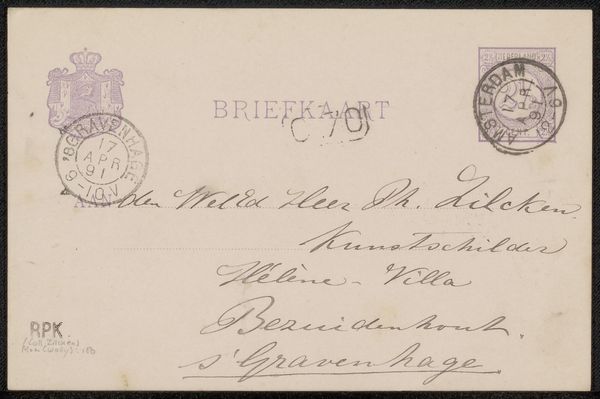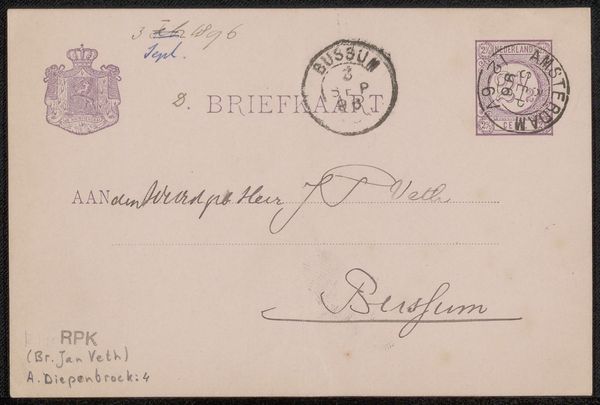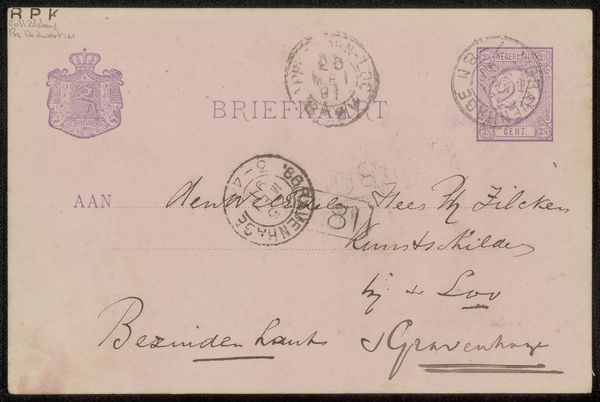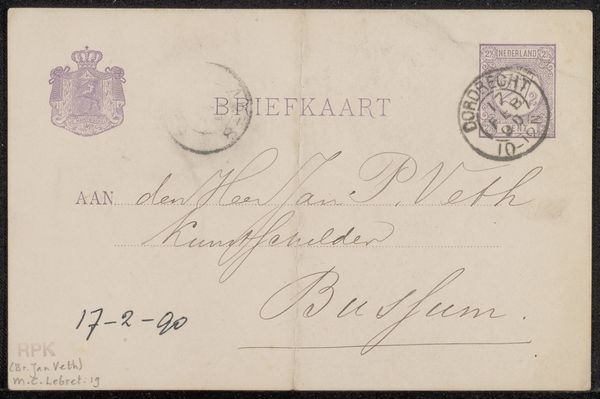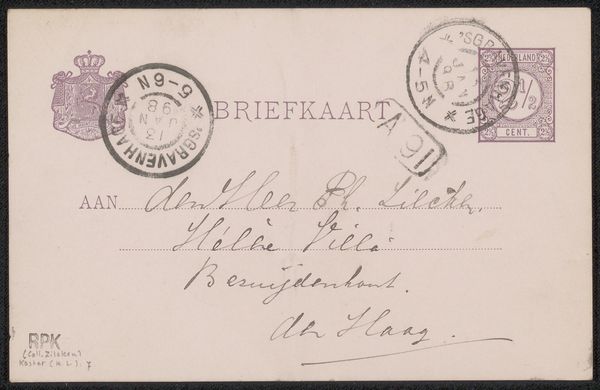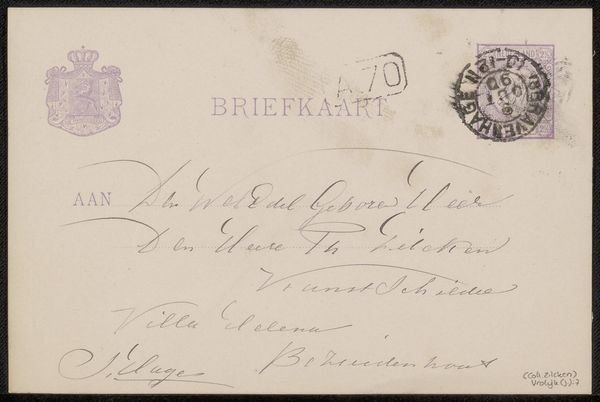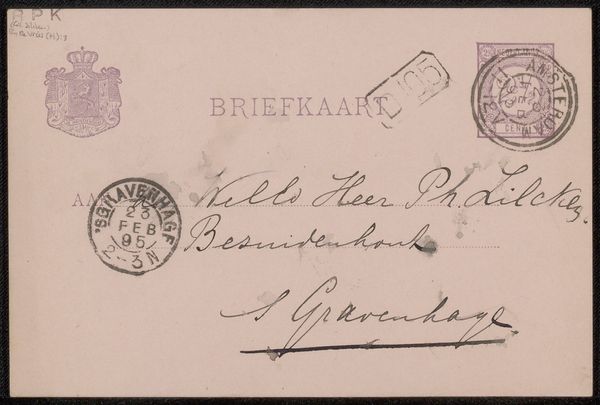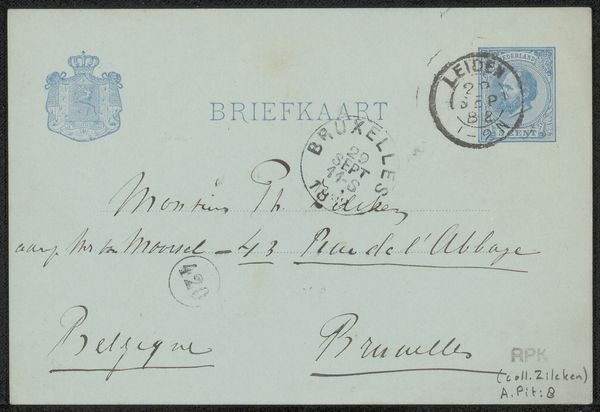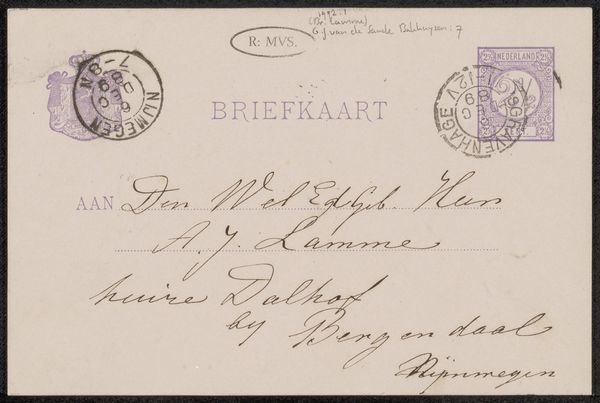
Copyright: Rijks Museum: Open Domain
Curator: Here we have "Briefkaart aan Frans Buffa en Zonen," a postcard dating probably from 1891 to 1897 by Willem Bastiaan Tholen, held here at the Rijksmuseum. It’s rendered in pen and ink. What's your initial reaction? Editor: Well, formally, it presents an intriguing study in pale lilac and sepia tones. The script, the stamps – they create a complex textural surface. Curator: Absolutely, but consider who Frans Buffa en Zonen were: prominent art dealers in Amsterdam. This card isn't just ink on paper; it’s a communication within a burgeoning art market, hinting at the economic and social networks artists navigated. Editor: Yes, and that very act of correspondence translates to the construction of his professional image. It underscores a very active pursuit of acknowledgement using what seems to be nothing more than efficient mark-making. Curator: Indeed! This era saw increased professionalization of artists, a shift facilitated by such figures as Buffa, who provided not only an outlet for their work, but also access to patrons and recognition. Tholen using a 'briefkaart' speaks volumes about access and the changing social dynamics. Editor: I'm captivated by the contrasting densities within the image. Notice the very definite stamped portions relative to the handwriting whose darkness is only implied with delicate pressures. It's quite balanced despite itself! Curator: Beyond pure form, consider the subtext, and what could lie between the artist, an artwork, a buyer, and their various intersecting subjectivities and positions within the commerciality of art? Editor: It highlights for me how something as simple as handwriting itself becomes a design element with varying emphasis. It certainly conveys Tholen's keen awareness of surface qualities in even the most seemingly banal forms. Curator: I find myself pondering who else handled this card. Editor: From my perspective, looking at the tonal range alone offers great understanding into the aesthetic approach Willem applied to his pursuit of professional advancement. Curator: For me, understanding that gives new dimensions to what constitutes the “artwork” in question. Editor: It allows us both to contemplate artistic expression’s core components on many satisfying levels.
Comments
No comments
Be the first to comment and join the conversation on the ultimate creative platform.
